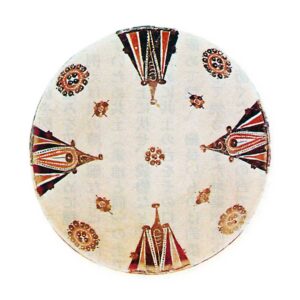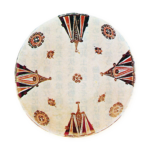
Samarkand is the ancient capital of the Uzbek Republic of the Soviet Union. Its name appears in history as Malakand, dating from the time of Alexander’s occupation in the 4th century B.C. This city along a tributary of the Oxus River flourished as a trading center. The city, located along a tributary of the Oxus River, flourished as a trading center until it was conquered by Kutayba, the governor of Khorasan, in 712 and entered the Islamic world. It later became as famous as Bohra, and was at the height of its prosperity when Chimur made it his capital in the 14th century. The Ghul-i-Emir Mausoleum, where the Chimur family is buried, is beautifully decorated with blue tiles and is still a famous landmark today. Bibi Hanum also has excellent tile decorations.
From the 10th century, many ceramics were fired near Samarkand and Bohara. Some were painted in black on a white ground, others in black, white, red, or green, etc. As in Nishapur, the dot-painting method was used. Many of them are also decorated with text.
This type of pottery seems to have been widespread along both banks of the Oxus River (Pope, A.). (Pope, A.U., “ASur-veyofPersianArt”)








